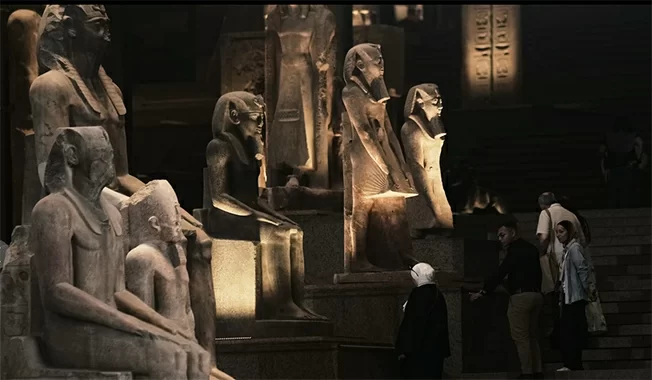Egypt has unveiled a monumental cultural achievement that has captured global attention: the Grand Egyptian Museum (GEM) in Giza. Situated on the outskirts of Cairo, near the iconic Giza Pyramids, this colossal complex is the world’s largest museum dedicated entirely to a single civilization – ancient Egypt. The official opening marks a historic milestone in Egypt’s cultural and tourism history, showcasing over 50,000 artifacts, many of which have never been displayed before. The museum aims to revitalize Egypt’s rich heritage and position the country as a global hub for archaeology, culture, and tourism. The GEM, a national prestige project, took over two decades to complete, with construction beginning in 2002 but delayed by political and economic challenges. With an estimated cost exceeding $1 billion, it stands as one of the most significant cultural investments in modern Egyptian history. The Egyptian Ministry of Tourism and Antiquities describes the museum as a ‘symbol of national pride and cultural continuity,’ expected to boost tourism as Egypt recovers from the economic impacts of the COVID-19 pandemic and regional geopolitical unrest. The museum houses the complete collection of Pharaoh Tutankhamun, featuring over 5,000 items, many previously unseen. Highlights include colossal statues, mummies, reliefs, and papyri spanning thousands of years of Egyptian history. A centerpiece is the massive statue of Ramses II, greeting visitors in the grand entrance hall. Designed by Irish firm Heneghan Peng, the building itself is an architectural masterpiece, blending modern design with ancient Egyptian symbolism. Large glass facades offer views of the pyramids, symbolically bridging the past and present. International collaboration, including significant support from Japan’s International Cooperation Agency, UNESCO, and various archaeological institutions, made the museum possible. Egypt envisions the GEM not only as a tourist attraction but also as a research and educational center, equipped with restoration laboratories, climate-controlled storage facilities, and educational spaces for global scholars. Tourism Minister Ahmed Issa emphasized the museum’s role in Egypt’s strategy to ‘use culture as a driver of sustainable development,’ stating, ‘Our heritage is not just a window to the past but a tool to build our future.’ The GEM is expected to serve as a major economic catalyst, with authorities aiming to attract over 15 million foreign visitors annually by 2026, matching pre-pandemic levels. Tourism accounts for approximately 10% of Egypt’s GDP and is a crucial source of foreign currency. The government is heavily promoting the museum internationally as the ‘gateway to Egyptian civilization.’ International analysts view the GEM as a model for leveraging cultural heritage to enhance national branding, with UNESCO noting that ‘Egypt proves history has future value.’ For developing nations in the region and beyond, the message is clear: investing in culture is investing in sustainable development.
